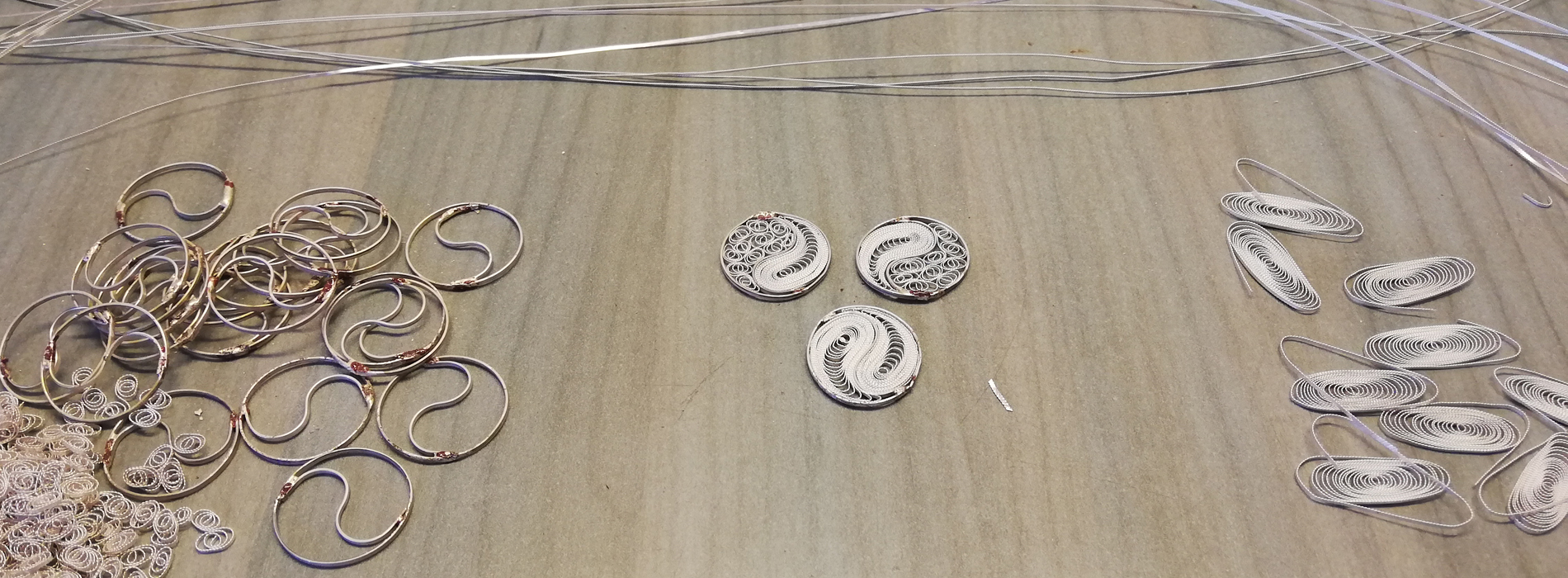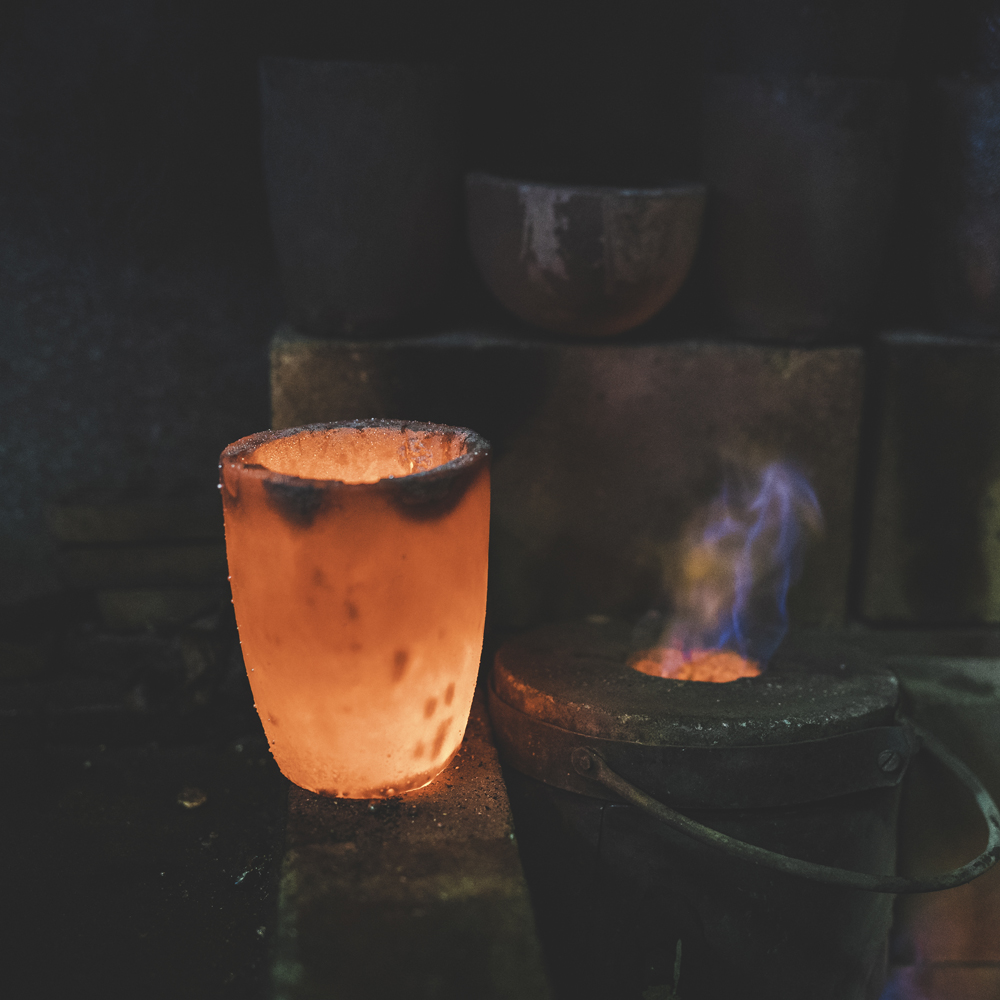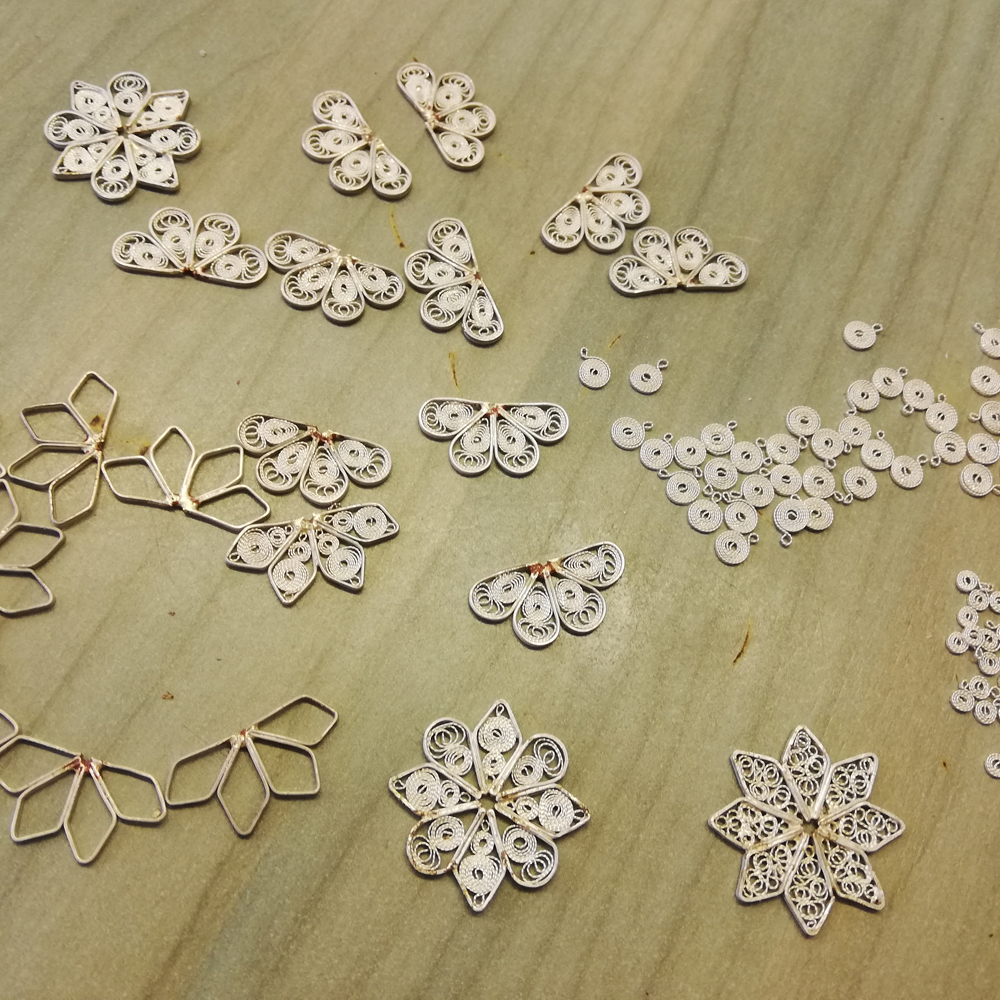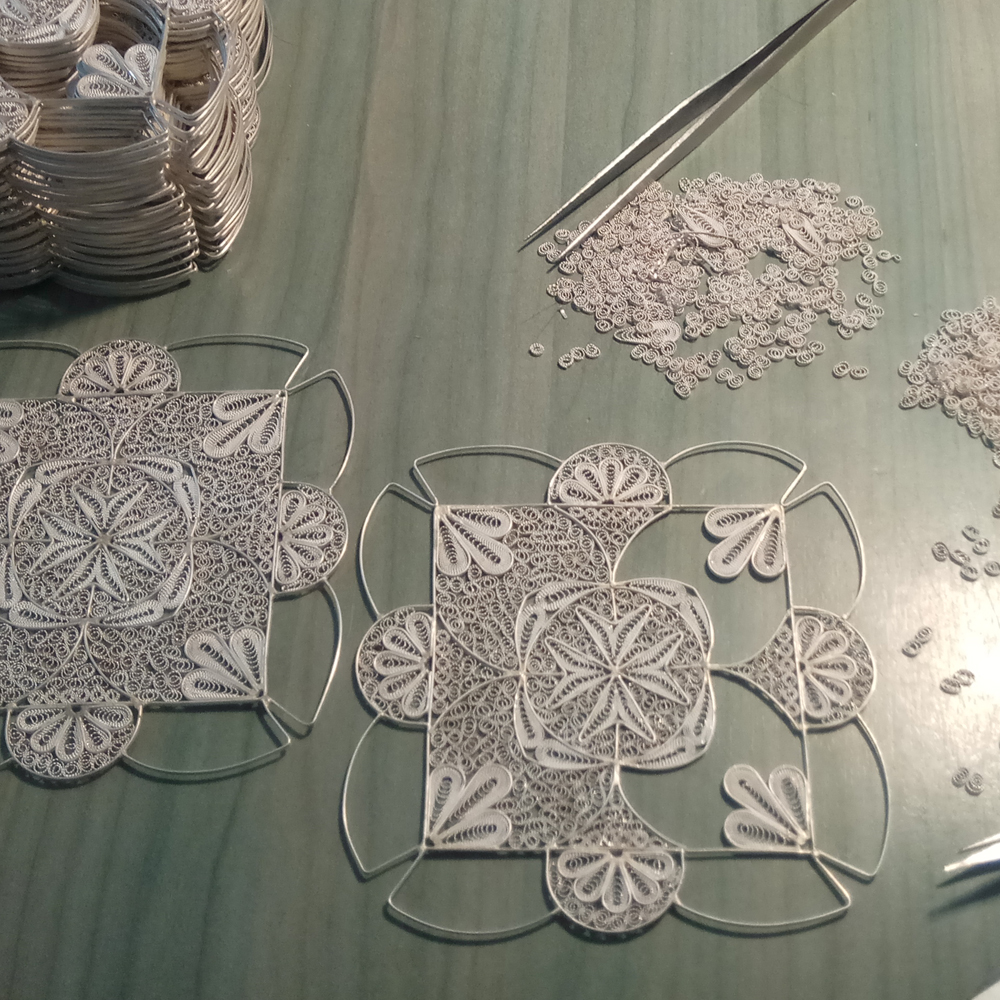The process of the art of filigree starts with the melting and the mixing of the pure gold or silver grains with another metal in a high temperature kiln. The most common metals we use are copper or zinc. The type and the amount of metal determine the colour and the carat of the final piece of jewellery.
Next, we pour the molten gold or silver alloy into a mould to form an ingot a few centimetres thick. This is pressed and stretched through a mill to produce wires of different thickness.From these wires, the outer framework is designed and formed. The filling of the framework is quite elaborate, performed by our special trained artisans.
Two thin wires are plaited, flattened and heated. They are subsequently cut into various lengths. Each length is coiled to form intricate spiral and scrolling patterns. “Ghajn u gorn”, “Matti”, “Genwiz” and “Skratac” are all different types of scrolls and spirals and are typical Maltese filigree patterns.
Using only a pair of tweezers and their fingers, the artisans fill the spaces of the framework to produce the beautiful open work of the filigree jewellery. The pieces are then soldered together with a brazing alloy.
The jewellery piece is dipped in a hot solution of sulphuric acid to remove the impurities and then polished in a rumbling machine. The final step is the electro-plating of the filigree jewellery.






